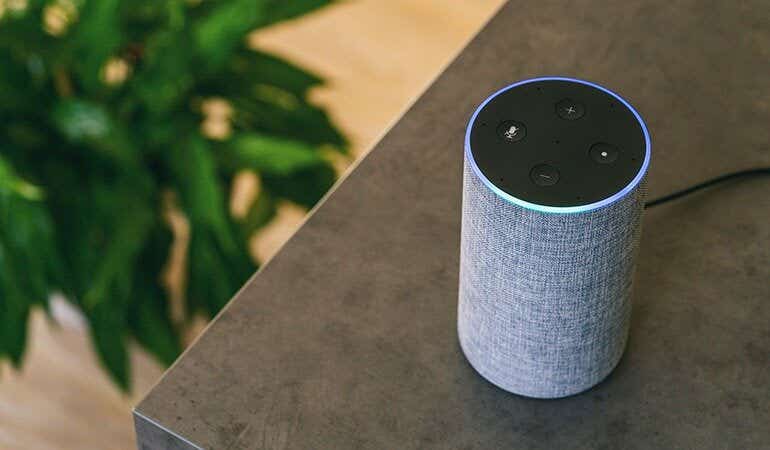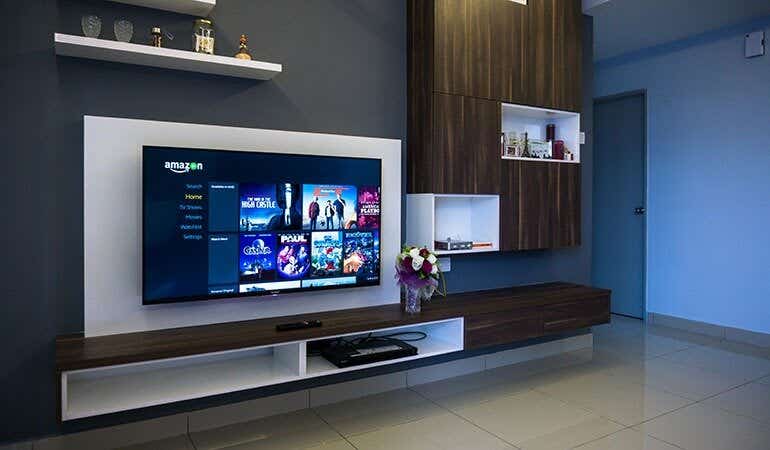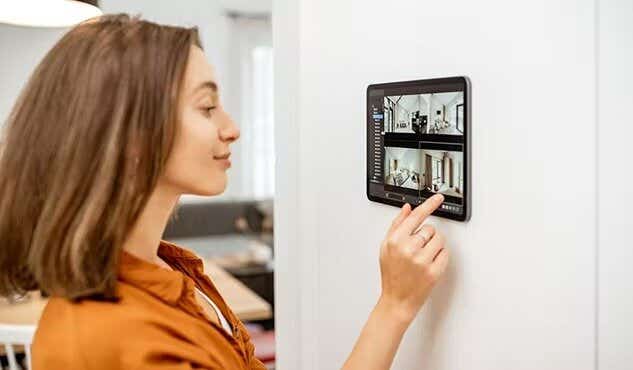Want to switch the lights on without standing up? Or time a wash cycle to finish for when you get home from work? There’s an app for that. And much more besides. By connecting your smart devices to a smart assistant, you can control your appliances on your smartphone.
But do you really need to upgrade your gadgets? And how much will it cost? Read on as we break down everything you need to know about the smart home products that will make a big difference to you.
What is a smart home?
A smart home contains gadgets and appliances that wirelessly connect to the internet and each other. This means you can control them using an app on your smartphone or a virtual assistant.
So, for example, if your smart security camera notices motion near your home, it will start recording and send a live feed to your smartphone.
Smart home products can improve everything from home security to household activities, like cooking and shopping. But which devices are worth getting? Let’s take a closer look.
Virtual assistants and smart speakers

Aside from your mobile phone, a voice-controlled smart speaker is the most important device to add to your smart home. Almost all connected equipment can be operated via a virtual assistant, so it’s the ideal central hub for all of your smart home needs, questions and requests.
Once you have added your devices to your assistant’s mobile app, you can set up rules where, if you give a specific request, it will trigger an action on multiple devices at the same time. So you could set it to mean that, when you say “goodnight”, it will turn off the lights, lock the front door, stop music playing and bring the heating to a lower temperature all at once.
There are lots of different smart speakers to choose from. While they all essentially do the same thing, you can pay extra for one that has a better sound system or even a screen. These ones are better for activities like cooking, and they can support video-calling too.
The most popular virtual assistants in use today are Amazon’s Alexa, Google Assistant, Apple’s Siri, and Bixby from Samsung. As well as smart speakers, they’re built into many smartphones and other electronics too. So even if you’re out of your speaker’s… earshot?... you can still get that device to do what you need just by using your voice.
We recommend:
Security

Increased security is arguably the greatest benefit to come out of the rise of smart homes. Smart security products can go a long way in preventing crimes on your property, while putting your mind at ease when you’re not at home.
Smart security cameras
Not only do wireless cameras serve as great deterrents to potential robbers and intruders, they are really handy if someone comes to your front door while you’re out.
While there’s a wide range of wireless security cameras that you can install inside or outside your property, a video doorbell is a very popular and more discreet option. It uses a camera to detect motion outside your home and then sends a live video feed to your mobile phone. This means you can see, and even speak to, whoever is at the door.
Video doorbells are super handy for dealing with deliveries while you’re away from home, and they provide a clear, constant view of the front of your house to capture any suspicious activity nearby.
We recommend:
Smart locks
A smart lock is a secure and convenient installation for your front door. It uses Bluetooth technology to sense which household members are coming in and out of your property, and it can even unlock the door for you if your hands are full with shopping.
It can be controlled from your mobile phone or smart speaker, so you can unlock the door for someone if you’re not able to get there yourself. Some can even be unlocked with a fingerprint or voice-activation by each assigned household member. This means you could actually be able to unlock your front door simply by saying “open sesame!” or “password”.
We recommend:
Large household appliances
Even some of the most staple electronics in the home are getting a smart makeover. Appliances we’re all too familiar with are now being modernised to fit nicely into the home of the future, and it’s likely to make household chores a lot more bearable.
Cooking and food prep
While options are still quite limited and prices remain high, smart fridges and ovens are starting to make their way into the kitchen.
Smart fridges connect to your Wi-Fi and offer a range of ways to help you preserve and shop for your food. They can also act as the central hub of your kitchen, offering inbuilt voice assistance and a large touchscreen display on the door to help you organise your day. Super advanced models also have cameras inside the fridge that can sense if you’re running low on a particular item, and order more to be delivered in the next few days!
Smart ovens also make use of screens and cameras to improve your cooking. Their displays offer a number of different cooking options, including a live video feed of what’s inside the oven. This means you can check how it’s doing without opening the door and letting hot air out.
You can also control smart ovens completely from your smartphone, so you won’t have to waste time waiting at home to change the temperature before heading out — you can just do it on the app from wherever you are.
We recommend:
Cleaning
Smart washing machines make one of the most boring household tasks a breeze, and they can be a lot more environmentally friendly than older models.
Like smart ovens, these appliances can be controlled entirely by an app on your phone. So you can stop, start or pause the cycle without having to walk over to the machine. They also remember your preferred cycles and suggest them first as you’re loading your washing in.
Many smart washers also have automatic scales built into the basin, so it can adjust the amount of water used for the wash to limit your water and energy consumption.
Smart dishwashers work in a very similar way. They can detect load size to adjust the amount of energy and water used in the cycle and can be completely controlled either by a smart speaker or a mobile app. Some can even learn when you might be running low on dishwasher detergent and automatically order more for you before you run out.
We recommend:
Home entertainment

One of the most common smart electronics in use today is the Smart TV. Almost all new TVs can connect to the internet, so you can access streaming services, apps and on-demand content.
While there’s a huge variety of TVs for different budgets and viewing needs, you don’t have to choose one with the latest super-advanced features if you want smart functionality. Smart TVs are already fairly affordable and widely available.
Visit our Samsung tech hub for more details on Samsung’s ultra-modern smart gadgets.
We recommend:
There’s also a huge number of speakers that have smart features built-in. While it’d make a lot of sense to just use an existing smart speaker like Amazon Echo or Google Nest for music, you might find yourself wanting a larger, better quality hi-fi system, especially if you want one for watching films and TV at home.
A wireless soundbar can really elevate your home entertainment if you connect it to your TV. It’ll let you experience the hard-hitting, cinematic sound. And many also come with virtual assistants, so you can still enjoy rich, deep sound if you’d prefer to listen to music instead.
We recommend:
Utilities
Many household installations come with smart features nowadays, and they can really help to keep your energy costs down in the long run.
Smart heating
Smart thermostats let you control your home’s heating in all manner of ways. If you link yours to an app on your phone, you’ll be able to control the temperature of your home from wherever you are.
Through a built-in sensor and using your phone’s GPS signal, it can also detect when you’ve left the house and automatically reduce the heating to save energy when no-one’s home. Likewise, if you’re on your way back to the house, it’ll realise you’re getting closer and turn the heating on early, so it’s nice and toasty when you walk through the door.
It will also learn your heating habits and offer ways you can cut down on your energy consumption. This can help reduce your gas & electricity bills over time. And if you have additional climate control equipment, like air conditioning or ventilation systems, you can add those to your thermostat’s app as well.
We recommend:
Smart meters are supplied by some energy providers when you sign up for a gas & electricity contract, and they automatically submit your meter readings without you having to do it yourself. They don’t change or set the heating in your home, but they can give you a better idea of your energy consumption and remove the dreaded task of conducting your own meter reading.
Find out more about how smart meters work with our guide.
Lighting
Another hugely popular smart home product is smart lighting. Connected LED bulbs are very energy-efficient, incredibly luminous with a wide array of different colours, and they can be controlled by an app on your mobile phone or through your virtual assistant.
You can set rules on your smart home hub to turn them off as you leave the house. Plus, they can make for a very impressive light show to house guests.
We recommend:
What broadband do I need for a smart home?
Most smart home devices hardly use up much bandwidth at all. Many will only start using data once they’re actively in use, and it’s rarely more than 2/3Mbps. However, if you’re using several connected devices at once, this demand for broadband can quickly add up.
Households with only a couple of smart devices probably wouldn’t notice a difference. If you have up to five constantly in use, you should make sure you have a strong fibre broadband connection of at least 35Mbps. For any more than five, you should aim for at least 60Mbps.
Fibre broadband is available to over 95% of properties in the UK, so you should have coverage in your area. However, if you can’t access faster fixed-line fibre broadband, you might find alternative options in mobile broadband or satellite broadband.
Take a look at our download time calculator to get a better idea of the broadband speed you need. It’s important to account for the demand every single Wi-Fi connected device has for bandwidth when making your estimates. If more than a few are being used at the same time, you could find yourself struggling if you’re on a slow broadband deal.
Looking for a faster broadband package to build your smart home? Compare broadband deals with Uswitch to find speedy connections at affordable prices.

